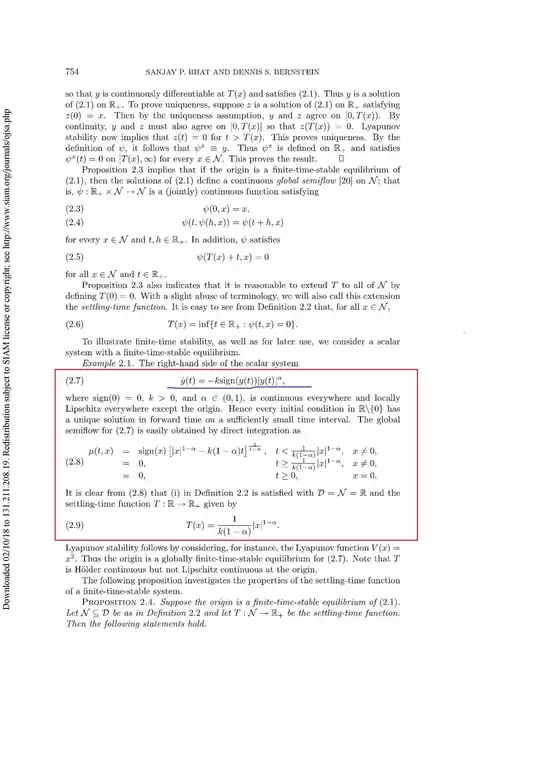In article Finite-Time Stability of Continuous Autonomous Systems i found this [page 4].
That's what I don't understand:
- Can (2.7) $\dot{y}(t)=-k \cdot {\rm sign}(y(t)) \cdot \lvert y(t) \rvert^{\alpha}$ be reformulated as a condition for convergence in a finite-time, i.e. $\dot{y}(t) + k \cdot {\rm sign}(y(t)) \cdot \lvert y(t) \rvert^{\alpha}=0$ ?
- What if I have an equation of the form $\dot{y}=\nabla_y f$ and want $\nabla_y f \rightarrow 0$ in finite-time. Does this mean that I must meet the condition $\dot{\nabla_y f} + k \cdot {\rm sign}(\nabla_y f) \cdot \lvert \nabla_y f \rvert^{\alpha}=0$
Please help me figure it out. I would be grateful for help.

Only unimodal functions are used as function $f$ in my task. An equation of the form $\dot{y}=\nabla_y f$ is always stable and from any starting point $y(0)$ converges to an equilibrium point. The problem is that this convergence occurs in a finite-time, and it seems to me that it can be solved if conditions are imposed on the motion of the state variables.
– dtn Apr 24 '21 at 07:20